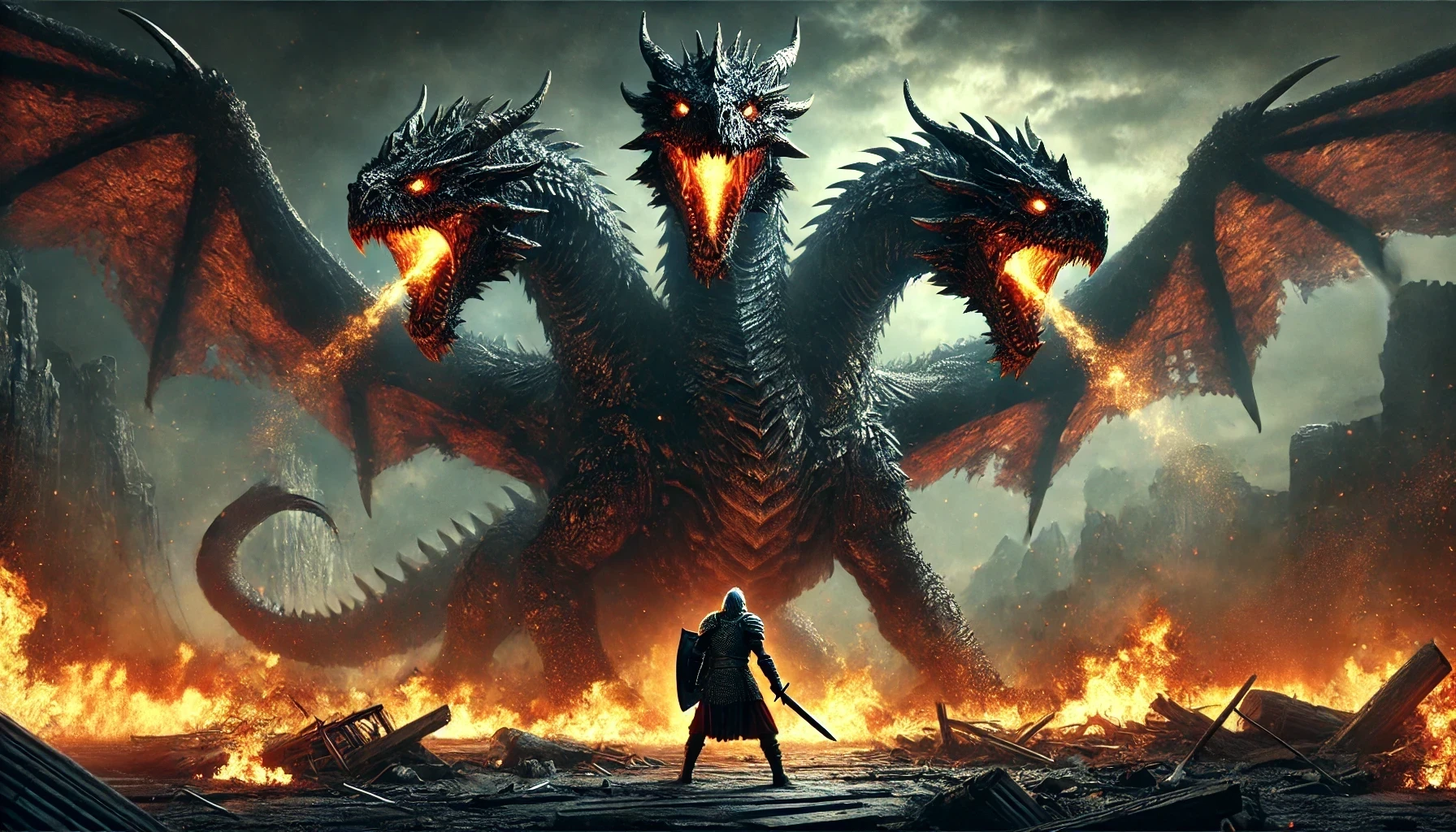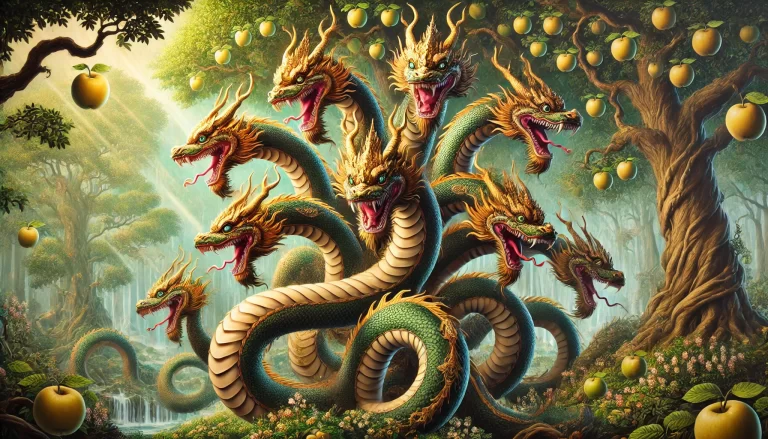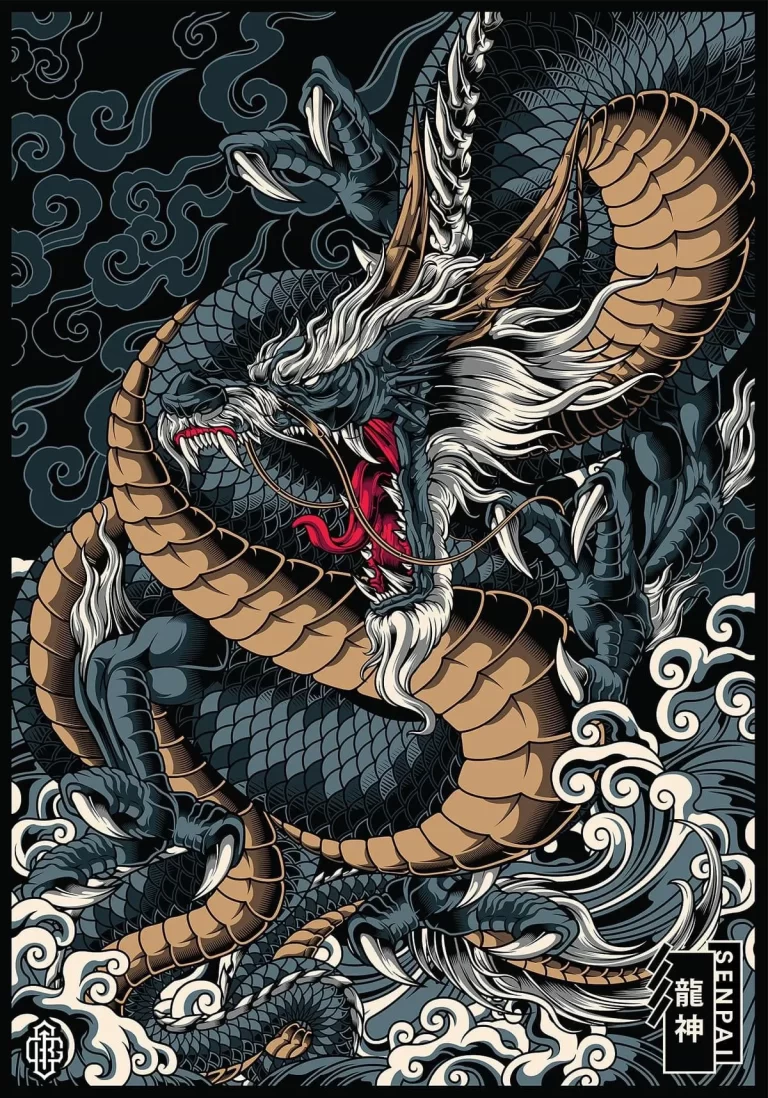Zmey Gorynych: The Legendary Three-Headed Dragon of Slavic Mythology

Zmey Gorynych: The Legendary Three-Headed Dragon of Slavic Mythology
In the vast tapestry of Slavic mythology, one creature stands out for its sheer power and ferocity: Zmey Gorynych. This three-headed, fire-breathing dragon is a symbol of chaos and destruction, often serving as the ultimate challenge for Russian heroes seeking to prove their valor. As a formidable adversary, Zmey Gorynych embodies the eternal struggle between good and evil, a theme that resonates deeply in Slavic folklore.
Origins and Mythological Significance
Zmey Gorynych’s origins are steeped in ancient Slavic lore, where dragons, or “zmey” (plural: zmey), are common figures representing untamed nature and elemental forces. The name “Gorynych” is derived from the word “gora,” meaning mountain, hinting at the dragon’s association with rugged, inhospitable landscapes. Unlike Western dragons, which often guard treasure or symbolize greed, Zmey Gorynych is more akin to a force of nature, an embodiment of chaos that must be overcome by the hero.
Appearance and Abilities
Zmey Gorynych is typically depicted as a massive, serpentine dragon with three heads, each capable of breathing fire. These heads are often described as having fierce, glowing eyes and sharp, menacing teeth, capable of incinerating entire villages with a single breath. The dragon’s body is covered in thick, impenetrable scales, making it nearly invulnerable to conventional weapons.
In some variations of the myth, Zmey Gorynych is said to possess more than three heads, with each additional head making it exponentially more powerful. The dragon’s wings are vast and leathery, allowing it to soar above the land and unleash devastation from the skies. This combination of fire-breathing and flight makes Zmey Gorynych an almost unstoppable force, feared by all who live within its reach.
Battles with Russian Heroes
Zmey Gorynych’s role in mythology is often that of the antagonist, a monstrous creature that must be defeated by a brave hero. These heroes, known as “bogatyrs” in Russian folklore, are legendary warriors of immense strength and courage. One of the most famous stories involving Zmey Gorynych is the tale of Dobrynya Nikitich, a valiant bogatyr who is often depicted as the dragon’s primary foe.
According to legend, Dobrynya Nikitich is sent by Prince Vladimir to rescue a maiden who has been captured by Zmey Gorynych. Armed with a magical sword, Dobrynya engages the dragon in an epic battle that lasts for several days. Despite the dragon’s formidable abilities, Dobrynya ultimately triumphs, slaying Zmey Gorynych and freeing the maiden. This story, like many others in Slavic folklore, highlights the virtues of bravery, resilience, and the triumph of good over evil.
Symbolism and Cultural Impact
Zmey Gorynych is more than just a monster in Slavic mythology; it is a symbol of the obstacles and challenges that individuals must overcome in their personal and communal lives. The dragon’s three heads can be interpreted as representing various aspects of adversity—physical, mental, and spiritual—that must be faced and conquered.
In Russian culture, the image of Zmey Gorynych has endured for centuries, appearing in various forms of art, literature, and even modern media. The dragon’s story has been retold in countless variations, each one adding a new layer to its mythos. Whether as a terrifying beast or a symbol of inner demons, Zmey Gorynych continues to captivate the imagination, reminding us of the timeless struggle between light and darkness.
Conclusion
Zmey Gorynych is a quintessential figure in Slavic mythology, embodying the fearsome power of nature and the eternal conflict between good and evil. As a three-headed, fire-breathing dragon, it presents an almost insurmountable challenge to the heroes who dare to face it. Yet, in overcoming this monstrous foe, these heroes not only prove their worth but also reinforce the enduring belief that courage and virtue will ultimately prevail.
The legend of Zmey Gorynych is a testament to the rich storytelling tradition of the Slavic people, a tradition that continues to inspire and fascinate audiences around the world.






